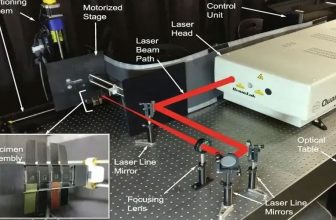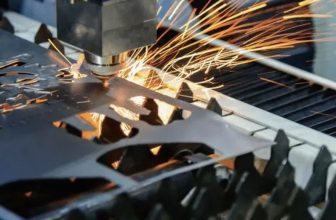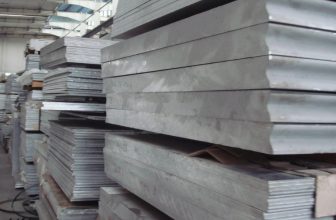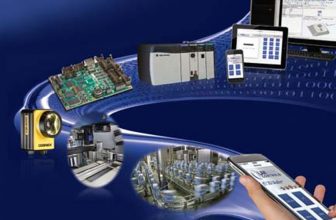
Over the past decade, ultrafast fiber laser technology has made great strides in terms of total power, pulse and beam quality, ease of use, and robustness. As a result, ultrafast fiber lasers are beginning to be used in multiple manufacturing industries for efficient and high-precision processing of materials. This article summarizes several recent advances in materials microfabrication using ultrafast fiber lasers with high pulse repetition rates. Of particular interest, in several other materials research, new properties and functions were discovered in several laser-processed materials, which led to the use of ultrafast fiber lasers not only as a powerful material shaping tool, but also as a potential An efficient material preparation tool.
The Welding Of Glass And Plastic
For most precision material processing applications, the excess heat generated in the workpiece is not required. However, for microwelding of transparent materials, carefully controlled heat accumulation is critical to melt the material and form the weld. The high intensity of the focused ultrashort pulse induces nonlinear absorption in the transparent material, so that a large amount of heat is generated only in a small area around the laser focus at the interface of the two materials. Each laser pulse generates very little heat, which is negligible if the focal area cools down before the next pulse. If the spatial overlap between the pulses and the pulse repetition rate is high enough (hundreds of kHz and above), heat will rapidly build up in this area and cause the material to melt. The amount of melting can be precisely controlled by varying the repetition rate and beam scanning speed. This technique has already been used in glass and plastic welding. Figure 1 shows a cross-section of the welded face between two pieces of glass. This high-speed, precise welding without sealing has many benefits, such as the need for sealing the edges of the panels when manufacturing solar panels, which is currently done with specially designed sealants and hot-melt systems.
“Burst Mode” Pulsed Laser Deposition
Pulsed laser deposition technology has been widely used in the basic research of new material development. High-power nanosecond pulsed laser ablation tends to form large droplets in plasma plumes (feather-like luminescence clusters), which can affect film quality. There are a number of mechanical and electronic ways to control the ablation plume to remedy the droplet problem. Ultrafast fiber lasers with high repetition rates offer an alternative solution. In particular, the laser pulses are grouped together to form a burst, each of which contains several individual pulses, which can achieve more precise thermal control, allowing the target to vaporize directly without forming large melts. drop.
Fiber laser systems can directly output pulse trains directly from the laser light source, which is called pulse train mode. For example, as shown in Figure 2(a), before entering the amplification stage, the acousto-optic modulator can be used to screen the seed pulses from the 50MHz oscillator, and the final output is a pulse train composed of multi-level pulses, and adjacent pulses The interval is 20 ns. The very short 20-nanosecond pulse interval causes multiple cumulative effects, including heat from the target and heat between the ablation plume and subsequent laser pulses, which ultimately optimize film quality. Figure 2(b) shows a TiO2 film deposited by this method. As shown in the transmission electron microscope (TEM) image in the figure, the quality of the film is very high, the surface of the film reaches an atomic level smoothness, and the interface between the film and the matrix is also very smooth. Observation of the 100 mm area with an optical microscope also revealed no large droplets.
Surface Micromodeling
As an alternative surface treatment method, laser surface micro-modeling (LST) can improve tribological properties with its high precision and pre-engineered methods compared to traditional sandblasting and chemical etching methods. On the other hand, it has been known for decades that laser ablation can also produce regular patterns on solid surfaces ranging from subwavelengths to hundreds of nanometers. This shaping method can usually be explained by the coupling interference between the surface scattered waves and the laser beam. In practice, this phenomenon is most pronounced near the ablation threshold. Given the nature of the interference, the positioning of the pattern can be controlled by changing the laser polarization. However, this interesting phenomenon has not been widely used.
In a recent study, we found that laser-patterned metal surfaces can become highly hydrophobic (they repel water) under certain conditions. Figure 3(a–b) shows scanning electron microscopy (SEM) images of laser-induced linear and particle-shaped surfaces fabricated with linear and circular polarization. Figure 3(c) shows the shadow image of water droplets on the laser pattern on the stainless steel surface. The acute angle of the water droplet is less than 30°, indicating that the metal surface is highly hydrophobic, which makes it possible to form a composite surface composed of porous solids and trapped air, thereby minimizing the area in contact with water.
While large-area, superhydrophobic metal surfaces can be treated with high-repetition-rate ultrashort-pulse lasers and robotics, the technique could be used to produce large outdoor equipment, such as wind turbine blades with ice-resistant surfaces. The industry is still looking for an efficient method, and the more successful photolithography methods are still confined to research labs and are expensive.
Laser Printing On Transparent Media
A special variant of pulsed laser deposition is the laser-induced reverse transfer (LIBT) technique, which can be applied to high-resolution laser direct writing. The technique uses a laser beam through a transparent substrate to ablate nearby targets. The laser-induced vapor is pushed back onto the transparent substrate for precipitation. LIBT technology has a wide range of applications in the laser field. Using ultrafast fiber lasers for this technology, we can print images in a wide, continuous grayscale range that can only be achieved at high repetition rates in the MHz range. Figure 4(a) shows this system. The computer-controlled beam scanner varies the beam scanning speed according to the gray level of the original image. The high repetition rate creates spatial overlap of multiple pulses, and the corresponding deposition volume accumulates, rendering a continuous grayscale visual effect.
This technique can expand additional functionality of the printed material. Figure 5 is an example of printing fluorescent text, the target is composed of phosphor powder. Figure 5(a) shows that the printed text is translucent under the light in the room. Figure 5(b) shows that the same text is irradiated with UV light, and the phosphor powder of the target emits bright orange fluorescence. This example shows that ultrashort pulse laser ablation is not a destructive process and does not destroy the material, and some functional properties of the target can be preserved by laser ablation.
Nanoparticles of gold, silver, and magnetic materials have many potential applications in biomedical science, including nanoparticle-based immunoassays, drug-targeted delivery, thermotherapy, and medical image enhancement, to name a few. The standard method for colloidal synthesis of nanoparticles is to chemically reduce metal precursors in liquid solvents and use surfactants to stabilize the particles and prevent them from polymerizing. This has the potential to generate impurities that are not ideal for biological applications. The use of laser ablation in liquids is a physical method that produces high-purity colloids of metal nanoparticles. In practice, a target (eg, a piece of gold) is placed in a liquid solvent (eg, water). The laser beam is focused on the surface of the target for ablation, and nanoparticles are also produced in the liquid solvent. Considering the unique solid-liquid phase transition process, femtosecond pulses should be preferred for nanoparticle formation. Higher repetition rates and beam scanning speeds increase production speeds.
A particular advantage of laser ablation in liquids is that the nanoparticle surfaces are charged during ablation, whereas colloids are electrostatically stable without the need for stabilizers, such as citric acid, which is widely used in chemical synthesis methods. This is particularly advantageous because the gold surface is more prone to react with other reagents when biofunctionalizing the surface of the nanoparticle. Figure 6 shows colloids of various materials, including noble metals, metal alloys, and organics, all produced by ablation in liquids with an ultrafast pulsed laser.
Summarize
Ultrafast fiber lasers are gradually becoming a powerful tool in the field of material micromachining. In addition to ultrashort pulse durations, the fiber laser architecture offers high repetition rates in the MHz range and burst modes, which contribute to more precise thermal control and higher processing speeds.








